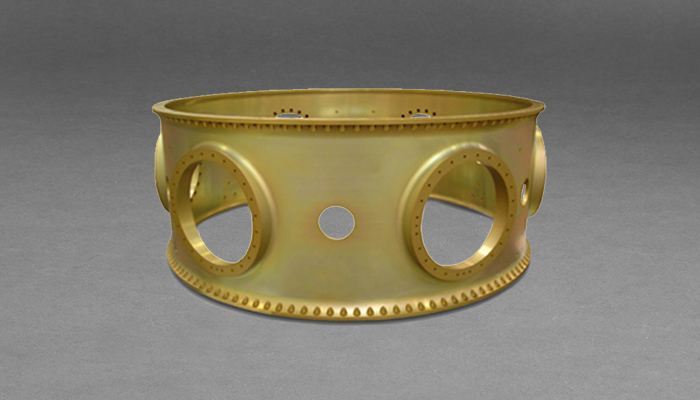ESPA
The Evolved Secondary Payload Adapter

ESPA GRANDE
ESPA Grande is a more capable version of ESPA with Ø24-inch ports; the ring height is typically 42 inches. The Ø24-inch port has been qualified by test to carry small satellites up to 1543 lb (700 kg).
ESPA IS ADAPTABLE TO UNIQUE MISSION REQUIREMENT
ESPA uses thru holes on the ports but they can be tapped holes if required. ESPA minimum height is determined by the port size, e.g., 24-inch ports correspond to a 32-inch height minimum, but 42-inch is typical for ESPA Grande.
Tested ESPA capacity assumes the use of load factors based on the ESPA Mass Acceleration Curve (MAC).
Specifications
| ESPA P/N | Port Count | Port ϕ | Ring Height | Port Payload Capacity | ESPA Mass | Port Interface Bolt Size | |
| Standard ESPA | 6-15-24 | 6 | 15" | 24" | 257 kg* | 136 kg | 1/4” Bolts |
| ESPA Heavy | 6-15-24 | 6 | 15" | 24" | 450 kg* | 136 kg | 5/16” Bolts |
| ESPA Grande | 4-24-42 | 4 | 24" | 42" | 700 kg* | 211 kg | 1/4” Bolts** |
| Stretched ESPA | 4-24-60 | 4 | 24" | 60" | 700 kg* | 286 kg | 1/4” Bolts** |
* Capacities require CG at 50.8cm (20”), and decrease to 220 kg, 322 kg, and 465 kg if using heritage ESPA load factors.
* * ESPA Grande is qualified with 1/4” or 5/16” bolts, larger bolts are recommended (but not required) for payloads above 465 kg
OTHER VARIANTS
ESPA is versatile and can be easily modified, in many cases with no impact to the qualification status. Port size and quantity can be “mixed and matched” to accommodate a variety of payloads. A common modification is five 24-inch ports on an ESPA Grande. Other port sizes such as 11.7-inch and 8-inch are possible. Examples include:

